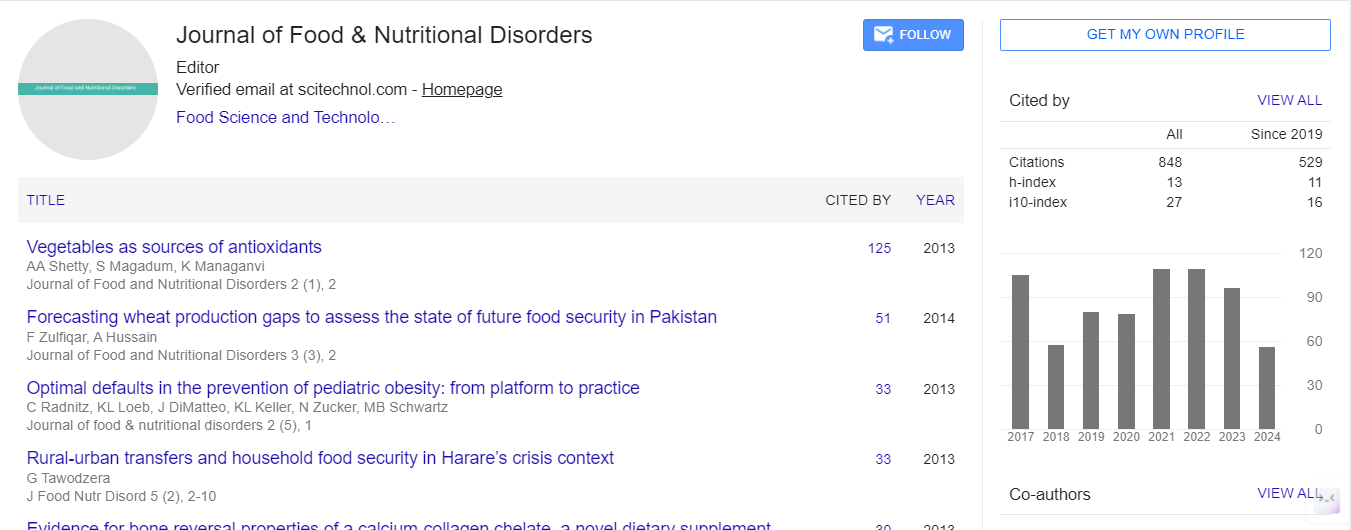Metabolic syndrome and its determinants in a sample of young Iranian children with obesity
Esfarjani Fatemeh, Mohammadi Fatemeh and Kelishadi Roya
University in Tehran, Iran
Isfahan University of Medical Sciences, Iran
: J Food Nutr Disor
Abstract
Childhood obesity increases the risk of metabolic syndrome (MetS) in childhood and adulthood. The present study was conducted to determine the prevalence of MetS and its potential determinants in a representative sample of young Iranian children.
Methods: This cross- sectional study was conducted among 150 obese children i.e. body mass index (BMI ≥95th percentile) with seven years of age, who were randomly selected from 3 districts of the north of Tehran, Iran. Trained nutritionists completed a socio-demographic questionnaire by interviewing parents and conducted the physical examination. Mets was defined based on modified ATP III criteria. Data from the questionnaires were analyzed with MS Access, SPSS and EPI Info softwares.
Results: The mean (SD) of weight, height and BMI was 37.5 (6.3) kg, 127.2 (4.7) cm and 23.08 (2.9) kg/m2, respectively. The prevalence of MetS was 13.4%, without significant difference in terms of gender. The most common component of MetS was abdominal obesity (79%) 21.3% of children did not have any component of MetS whereas 42% of them had at least one component. Most children with MetS had a history of breastfeeding for less than 6 months. Logistic regression model revealed that children with birth weight of ≤2500 were at higher risk of MetS than children with a birth weight more than 2500 grams (OR=4.3; 95%CI: 1.1-9.7).
Conclusion: Primordial prevention of childhood obesity and screening the components of MetS among obese children should be considered as a health priority at individual and public.
Biography
E-mail: fesfarjani@hotmail.com
 Spanish
Spanish  Chinese
Chinese  Russian
Russian  German
German  French
French  Japanese
Japanese  Portuguese
Portuguese  Hindi
Hindi 
